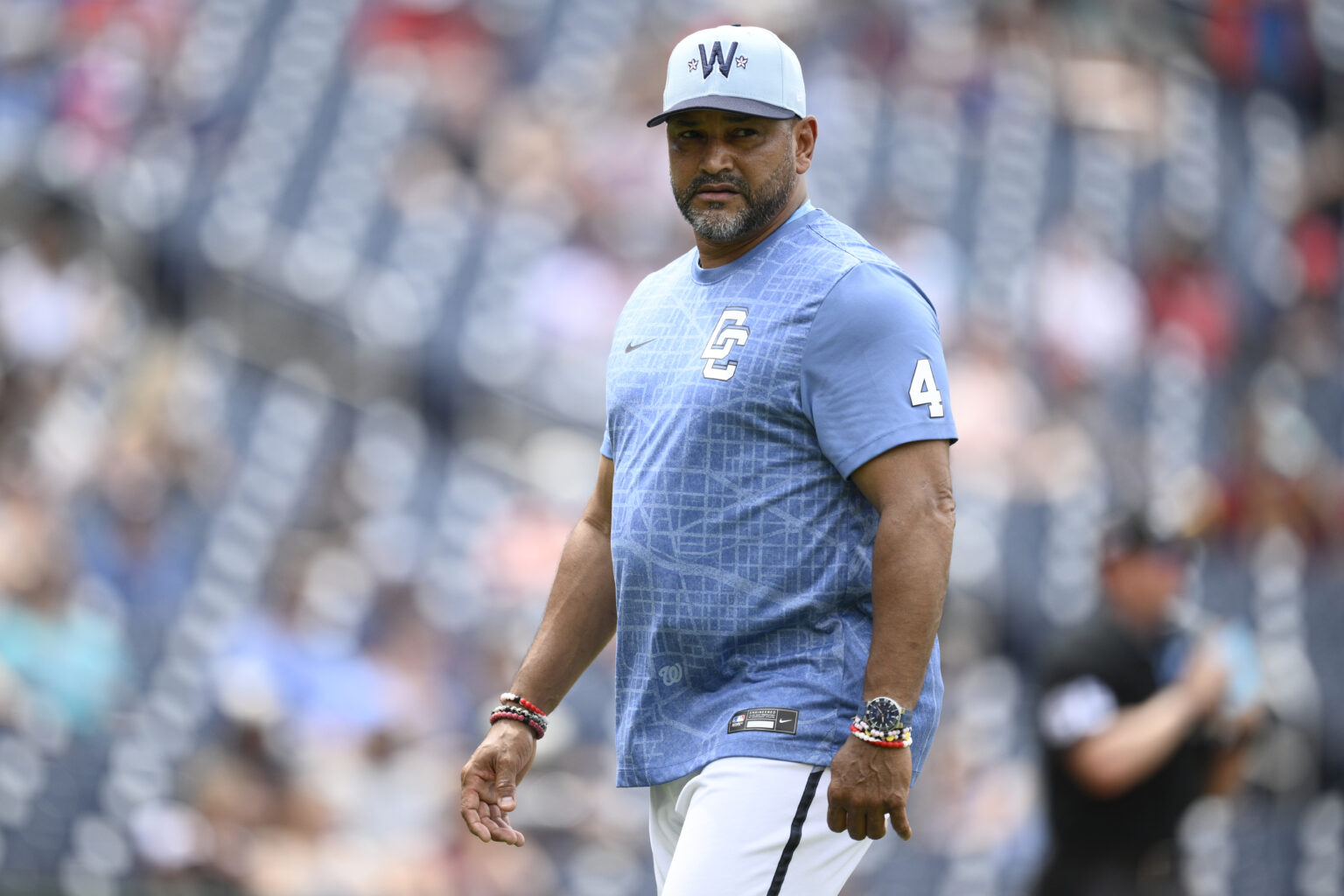Washington Nationals Face Crisis Amidst Internal Tensions and Performance Decline
Manager’s Outburst Sparks Controversy at Nationals Park
On Saturday afternoon, a significant upheaval occurred at Nationals Park when manager Dave Martinez publicly lost his composure. His comments crossed the unspoken boundaries of clubhouse etiquette, which typically emphasize collective responsibility rather than individual blame. In a moment of frustration, Martinez suggested that his coaching staff was not responsible for the team’s ongoing struggles, inadvertently creating a divide between the coaching personnel and the players. This “us versus them” narrative implied a rift, with some players reportedly taken aback by the message. Despite the public clarification that he did not intend to single out his players, the damage to the team’s unity and the long-held vision of a promising rebuild remains.
Current State of the Nationals: A Team in Stagnation
Despite showcasing promising young talent, including their most talented hitter since Juan Soto, the Nationals have suffered a string of setbacks. As of Monday, they have lost eight consecutive games, including a disappointing series at home against the last-place Miami Marlins-an opponent they should be beating regularly. Their offensive output has been underwhelming, tallying just 31 runs over 13 games in June, averaging barely over two runs per contest. With a record 11 games below .500, the team appears poised for another veteran sell-off, as players who once represented the future core continue to underperform, repeating familiar mistakes.
Deep-Rooted Challenges: Ownership Apathy and Developmental Drought
The Nationals’ struggles are not recent but are the culmination of years of systemic issues. Apathy from ownership, coupled with a prolonged drought in player development, has left the team mired in mediocrity. Even the most seasoned manager, who has weathered many tough seasons, is visibly frustrated by the persistent inconsistencies among his players. This frustration is now palpable within the organization, fueling a sense of stagnation that hampers progress.
Leadership and Organizational Stability: The Roadblocks to Change
Decisions for change are complicated by the longstanding tenure of key figures. Martinez and team president Mike Rizzo have been fixtures at Nationals Park for years-Martinez since 2018 and Rizzo since 2009. Both hold club options for next season, but the Lerner family’s indecisiveness complicates future planning. Despite their past successes, including a World Series title, recent seasons have been marred by over 90 losses in four consecutive years. The ownership’s reluctance to invest further in the roster or infrastructure has limited the team’s ability to compete at a higher level.
Financial Constraints and Strategic Limitations
The Lerner family’s hesitance to commit financially has been evident. Despite claims of having ample resources, the team has yet to secure new sponsorship deals or stadium naming rights, citing declining revenue as a barrier. This inertia raises questions about whether the organization will reinvest in high-profile free agents or focus solely on developing young talent. Without significant financial backing, the Nationals risk becoming a team that relies heavily on unproven prospects, which may stall their growth and competitiveness.
Assessing the Role of Coaching and Player Development
Martinez’s comments about player performance highlight a fundamental truth: the team’s issues are rooted in both talent and execution. Young hitters need to refine their approach beyond the simplistic “see ball, hit ball” mentality, and base runners must improve their decision-making. Defensive consistency in the infield is also a concern. A potential solution could involve restructuring the coaching staff-bringing in new voices to invigorate player development. For example, Sean Doolittle’s impact on young pitchers last year demonstrated how fresh perspectives can catalyze improvement.
Responsibility and the Challenge of Roster Construction
While coaching adjustments might help, accountability also rests with Martinez, who selected his current staff. His repeated efforts to guide young players like Luis García Jr. and Keibert Ruiz have yet to yield consistent results, suggesting that familiarity and ongoing frustrations may contribute to stagnation. Meanwhile, roster construction remains a key responsibility of Rizzo. His strategic trades, including a notable blockbuster that secured key players after the departure of Juan Soto, have improved the team’s core. However, the minor league system, though better than before, has yet to produce a steady pipeline of impactful players, and limited resources hinder further development.
Balancing Talent and Investment: The Future of the Nationals
The Nationals possess a wealth of promising young talent, including James Wood, CJ Abrams, and MacKenzie Gore, among others. Yet, without targeted offseason investments-such as acquiring a veteran bat or a reliable catcher-the team risks remaining in a cycle of hope and disappointment. The question remains whether the Lerner family will increase spending to supplement their prospects or continue to operate as a small-market team relying on internal development. Historically a top-10 payroll team, the Nationals’ current financial stance suggests a potential shift toward a leaner, development-focused approach, which may or may not yield immediate results.
Conclusion: A Crossroads for the Nationals Organization
The weekend’s incident was a symptom of deeper issues within the Nationals-an organization grappling with internal frustrations, ownership indecision, and a lack of strategic investment. As they prepare for a four-game series against the struggling Colorado Rockies, the team’s trajectory remains uncertain. The current state underscores the urgent need for organizational introspection and decisive action. Whether through roster upgrades, coaching changes, or a shift in ownership strategy, the Nationals must address these systemic challenges if they hope to rise from the depths of their current slump and restore their competitive edge.

